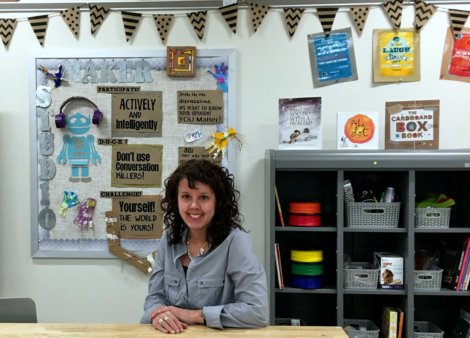
Guest Blogger Tyler Fowler: BrainPOP Through the Eyes of a Tech Specialist
Posted by cemignano on
Guest blog post by Tyler Fowler, Learning Technology Integration Specialist, USD 207 Fort Leavenworth, Kansas
As a technology coach to fellow teachers, I get the chance to see, test, and teach lots of new technologies, apps, websites, and devices. In fact, a major element of our three year CYBER-TEAMS initiative involves deeply integrating the optimal technology available to improve student learning. However, one of the educational technologies we like a lot isn’t new at all. Our teachers began using BrainPOP over ten years ago. Today, across our three elementary schools, I estimate that at least one or two teachers per grade level use BrainPOP with some regularity. Several of our junior high educators use it as well. I’d like to share some of the reasons that I believe BrainPOP supports student learning.
Humorous Tone & Serious Gaming
One of the first things you’ll notice about BrainPOP is that it’s often funny. Lead characters Tim and Moby have a humorous tone, which kids love. Heck, adults like me love it, too, and this makes learning more enjoyable. Students are energized by this aspect, and are motivated by the challenges inherent in the games and quizzes. They like to keep working and learning. Content is shared in a way that young students can best relate. Of course, you could find some of these games all over the web, but BrainPOP has vetted all the lessons and games and integrated them into larger challenges.
With our focus on Serious Gaming, the BrainPOP GameUp site has become a great resource for students and teachers as well. The games collected on this site are games that have been created with specific learning objectives in mind.
Learning Spaces
Don’t let the jokes fool you, though, there’s a lot of learning. BrainPOP offers flexibility in terms of devices and learning environments. Years ago, our teachers would use BrainPOP with the entire class around the SMARTboard at the front of the room. As the numbers of available devices grew, we gathered small groups around computers, and at times, today, we can have each child using his or her personal learning space on a tablet. Teachers can adapt the app to fit the situation, and students can self-pace their learning appropriately. They move ahead when they’re ready.
This adaptability helps teachers assist students who may be ahead or behind. While apps like BrainPOP can make the teacher more effective and efficient in helping a classroom of students at different levels, this is more than an efficiency tool. It fundamentally changes the learning atmosphere. As a Professional Learning Community, this is one way we can address the third and fourth questions:
- What will we do when students haven’t learned it?
- What will we do when students have learned it?
Different Stages of Learning
BrainPOP can be used at many different stages of the learning process: Introducing a topic or idea, research and building knowledge, assessment, and more.
When I first tried BrainPOP with my own classes several years ago, I would typically use something like the Tim and Moby video content to introduce a scientific process like the life cycle of a butterfly before launching into my own science lesson. Later, I might have used one of the quizzes to help assess how the students had learned.
It wasn’t until I sat in on Jessi Corriston’s 5th grade class and saw her using BrainPOP for a research project that I realized it could also be used for research. She asked her students to use the BrainPOP app on the iPad as one source when doing research. They watch their topic video and pause to write down any interesting facts or ideas they had not known.
Not only was Jessi employing it as a fun way to kick-off a lesson, it also became the foundation of a scaffolded approach to digital citizenship before the students investigated other sources of content like Wikipedia or news outlets. With so many sources of sometimes unreliable content on the internet, BrainPOP is a kid-friendly place to learn the basics of a topic before using other sites. The younger the students, the more important this is, I believe.
Power-user Peggy Brown, one of our first grade teachers, has been using BrainPOP in her classroom for over a decade, and one of the ways she uses it is to build knowledge by watching the short videos or playing the games. She views it as a resource that she can use at any step of the way, from lesson introductions to skill building to assessments – she covers the gamut.
Educator Generated Content
The growth in the varieties of apps and the number of users has led to more and more great content. In addition to different “flavors” like BrainPOP Junior for K-2 and BrainPOP ELL, there’s a ton of teacher built content shared among the teacher user community. Our teachers are using the BrainPop Educators site to find resources like lesson plans, quizzes and other activities to support classroom curriculum.
I suspect there are more ways we’ll learn how to use BrainPOP as we continue, but these four reasons are a good start!














